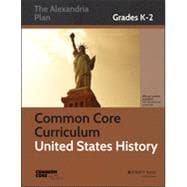From the organization that prepared the bestselling Common Core Curriculum Maps in English Language Arts, this book provides everything K-2 teachers need to help students learn history while following key literacy and social studies standards. Although there are no comprehensive national standards for social studies, the CCSS for English language arts address social studies content in two ways: through specific standards for teaching reading and writing about social studies, as well as indirectly through teaching how to read informational texts, including many exemplars related to United States and world history.
Created by teachers, for teachers, the curriculum maps in this book present a comprehensive, coherent sequence of thematic units for teaching the social studies skills outlined in the CCSS for English language arts.
- The curriculum maps are the perfect guides for history teachers who can plan their year around the standards and craft their own more detailed lesson plans
- The maps are flexible and adaptable to accommodate diverse teaching styles
- Incorporates the best of local state social studies standards








